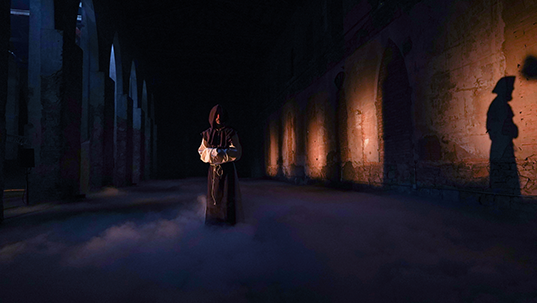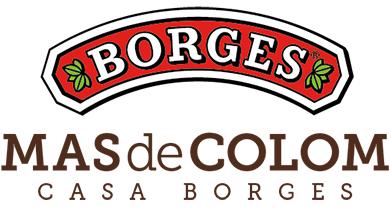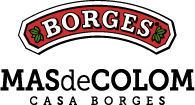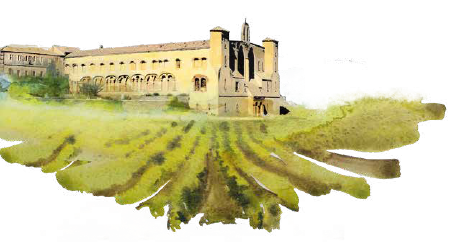
The history of Mas de Colom
From medieval farmyard to Cistercian abbey and field hospital during the Spanish Civil War.
Right in the middle of the Mas de Colom estate is an old farmhouse whose official records date back to the 16th century. In 1699 the rights to the property were ceded to the popular notary public of Tàrrega, Francesc Colom, who gave the name "Mas de Colom" to the estate.
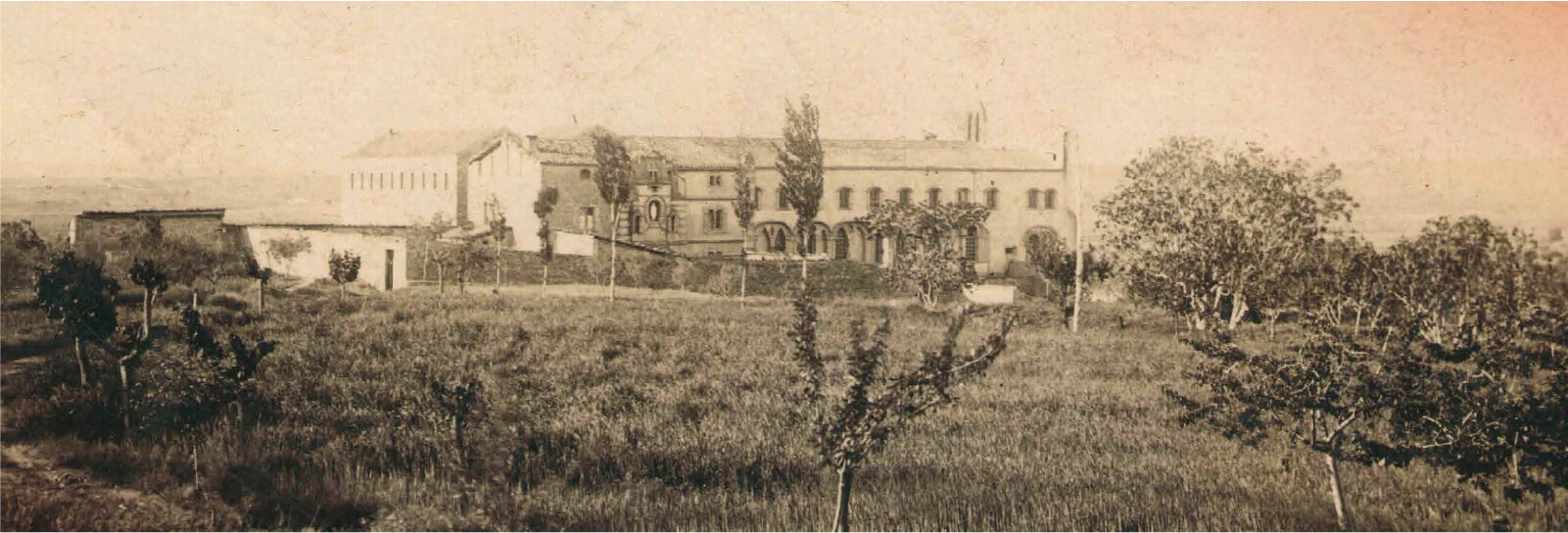
In 1896, a group of five exclaustrated Cistercian monks from Fontfroide (in the south of France) arrived with the intention of settling at the farmhouse and founding the new order of Our Lady of Suffrage.
This religious community was responsible for building the current neo-Gothic monastery in the early 20th century. During their time there, the monks also introduced some changes to local agricultural customs, such as planting American vine stock and tilling more deeply with a heavy-duty plough, which caused quite a stir in the neighbouring areas.
However, in 1920 the community of monks decided to leave Mas de Colom for good; some because of the need to return to France (Sant Miquel de Cuixà) after the end of the First World War and others because of the lack of religious vocation. Faced with this situation, they decided to hand over custody of the monastery to the Capuchin friars of Tàrrega.
A few years later, during the Spanish Civil War, Mas de Colom was used as a Republican field hospital, attending to emergencies resulting from the offensives on the Segre front, wounds and other injuries, malaria and typhoid fever.
As from January 1939, the hospital was taken over by the National Army and used as a military barracks.
After years of abandonment and deterioration, in 1954 the estate was bought by the Pont family (current owners of the Borges Group). Today, Mas de Colom is an experiential, informative and educational brand centre that's open to the general public. It also offers a range of seasonal activities that incorporate culture, historical heritage and the world of agriculture with the aim of promoting healthy habits and the conservation of biodiversity.
This religious community was responsible for building the current neo-Gothic monastery in the early 20th century. During their time there, the monks also introduced some changes to local agricultural customs, such as planting American vine stock and tilling more deeply with a heavy-duty plough, which caused quite a stir in the neighbouring areas.
However, in 1920 the community of monks decided to leave Mas de Colom for good; some because of the need to return to France (Sant Miquel de Cuixà) after the end of the First World War and others because of the lack of religious vocation. Faced with this situation, they decided to hand over custody of the monastery to the Capuchin friars of Tàrrega.
A few years later, during the Spanish Civil War, Mas de Colom was used as a Republican field hospital, attending to emergencies resulting from the offensives on the Segre front, wounds and other injuries, malaria and typhoid fever.
As from January 1939, the hospital was taken over by the National Army and used as a military barracks.
After years of abandonment and deterioration, in 1954 the estate was bought by the Pont family (current owners of the Borges Group). Today, Mas de Colom is an experiential, informative and educational brand centre that's open to the general public. It also offers a range of seasonal activities that incorporate culture, historical heritage and the world of agriculture with the aim of promoting healthy habits and the conservation of biodiversity.

